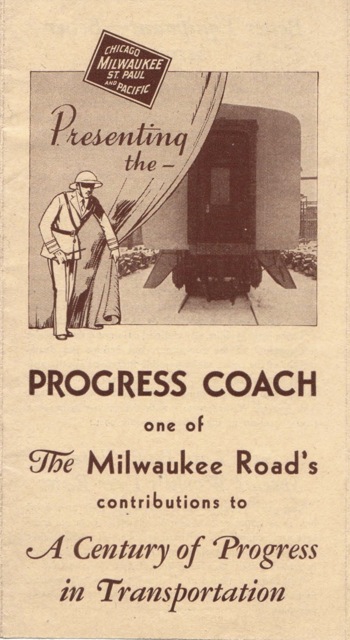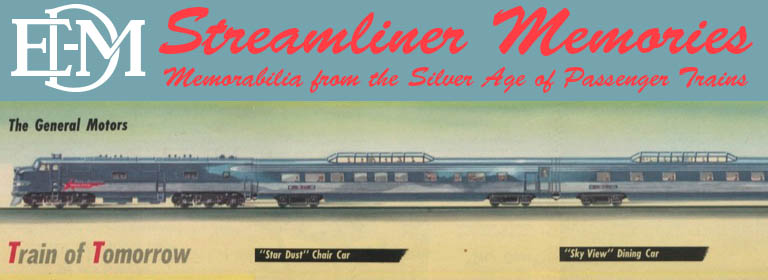Playing on the “progress” theme of Chicago’s 1933 Century of Progress fair, the Milwaukee Road presented its version of what would soon be called a streamlined passenger car. It has roughly the same profile of future streamlined cars, instead of heavyweights, and it had smooth sides with no apparent rivets. However, the interior looks straight out of a heavyweight car, with wood paneling and stiff-looking seats.

Click image to download a 1.8-MB PDF of this five-panel brochure.
The coach was just 72-feet long, compared with 80-feet for most Pullmans. The brochure says “33 percent more room per passenger,” but that’s easily changed in any car by adding or deleting seats. In fact, this shorter-than-normal car was built with 54 seats; less than the 78 that Milwaukee says was normal for a coach, but more than the 44 to 48 that was found in many post-war streamlined coaches.
As has been noted here before, the Milwaukee was unusual in that it built many of its own passenger cars instead of buying them from Pullman or another car-builder. The brochure says that it planned to build 50 of these coaches, which it probably used in Chicago-Twin Cities service and other Midwestern routes.
